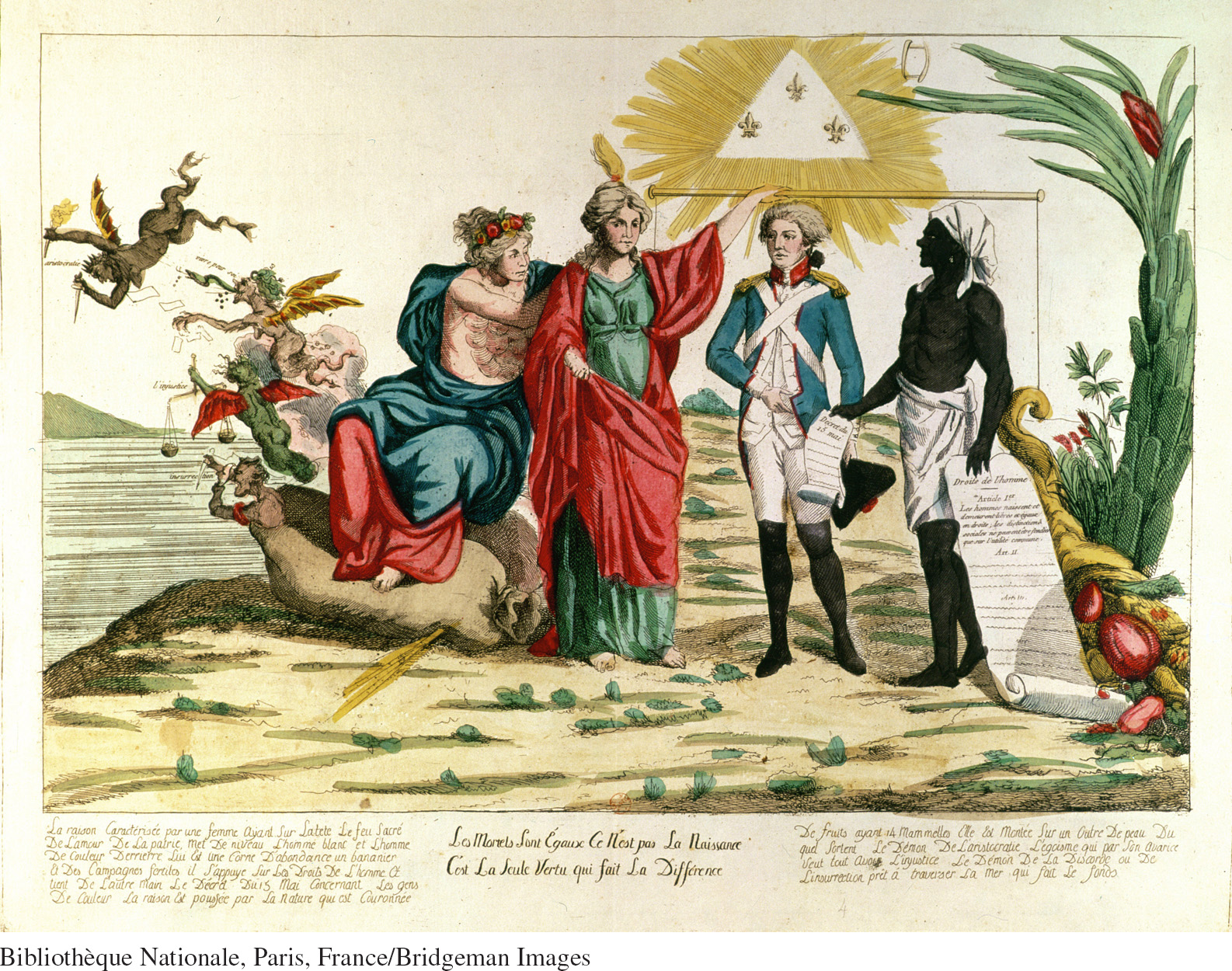The language of “rights,” derived from the French Revolution, had implications for race relations and the long-established practice of slavery, as well as for colonial rule. France legally abolished slavery in its colonies in 1794, though it was restored by Napoleon in 1802. The contradiction between the “rights of man,” racial inequality, and, by implication, slavery was addressed in an engraving produced in 1793, the year before slavery was abolished, titled “All Mortals Are Equal, It Is Not Birth but Virtue That Makes the Difference.” The allegorical figure at the center of the image is Reason, with the sacred flame of “love of the fatherland” emerging from her head. She places a level on a white man and a man of color, behind whom is a cornucopia of abundance. The man of color holds in one hand the Declaration of the Rights of Man and Citizen (1789) and in the other the Decree of May 15, 1791, which granted free blacks and mulattoes political rights. Reason is pushed by the allegorical figure of Nature, who is seated on a sack out of which flee the demons labeled Aristocracy, Selfishness, Injustice, and Insurrection. While this image celebrates political rights granted to free blacks and mulattoes, it could also be read as advocating the same rights for slaves at a time when France was edging toward emancipation legislation.
